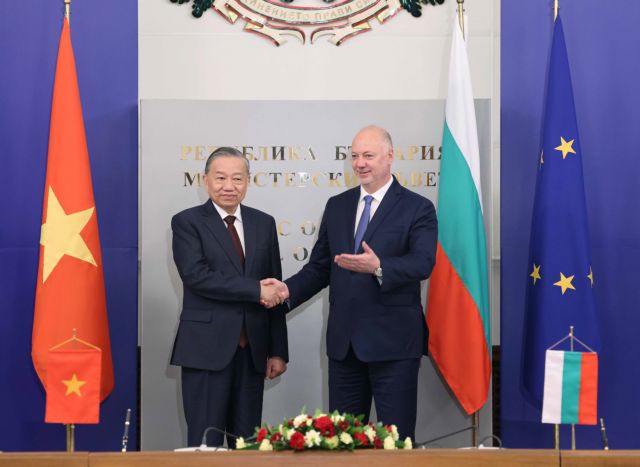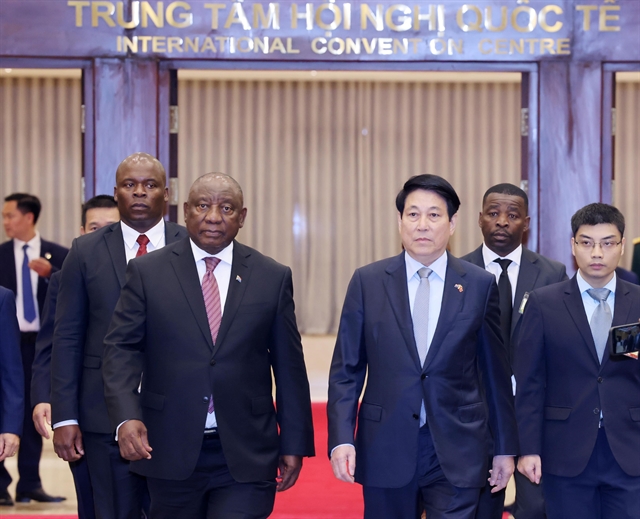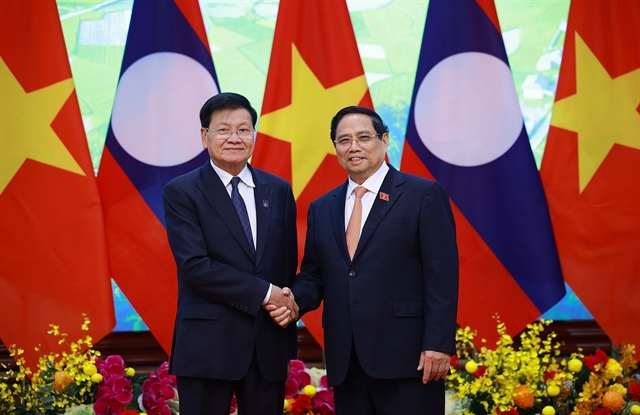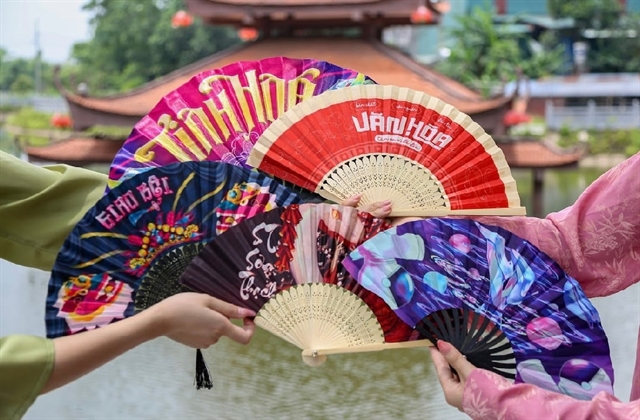 Life & Style
Life & Style
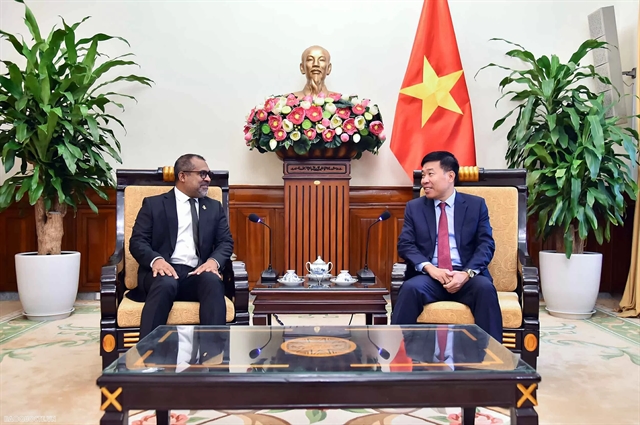
During the festival, mediums performed rituals dedicated to different genies worshipped. A council of experts and local authorities then remarked on the performers, their costumes, dances and music.
 |
| Old arts: Medium Hoàng Minh Đỗ pretends to embroider during a hầu đồng ritual dedicated to Lady Nine. — VNS Photo Long Hưng |
By Minh Thu
HÀ NỘI — Medium Hoàng Minh Đỗ from Hà Nội sways in a succession of flowing costumers as she dances in a ceremony dedicated to Lady Nine, one of the ancient genies at the heart of Vietnamese Mother Goddesses worship.
One by one her costumes are changed by her devoted attendants kneeling beside her. Then the music quickens and she rises to her feet holding incense and instruments - or swinging swords.
She acts out her role as Lady Nine embroidering on a brocade frame. Her dance is accompanied by haunting instrumental music and songs performed by cung văn (singers involved in Mother Goddess worship).
There is a golden loom in Lady Nine’s temple. With an ivory shuttle bar, she embroiders flowers and recites lyrics about Lady Nine.
Đỗ was one of 29 mediums at the Hà Nội Cultural Hầu Đồng Festival which ran for a week, ending yesterday. The festival was followed by a seminar on preserving and promoting values of Mother Goddess worship and hầu đồng ritual.
During the festival, mediums performed rituals dedicated to different genies worshipped. A council of experts and local authorities then remarked on the performers, their costumes, dances and music.
“The mediums participating were veterans,” said Lưu Ngọc Đức, a member of the organising board.
“We organise the festival with the aim of preserving and promoting Mother Goddesses worship and its hầu đồng ritual. We want to build up a standard for all hầu đồng rituals.”
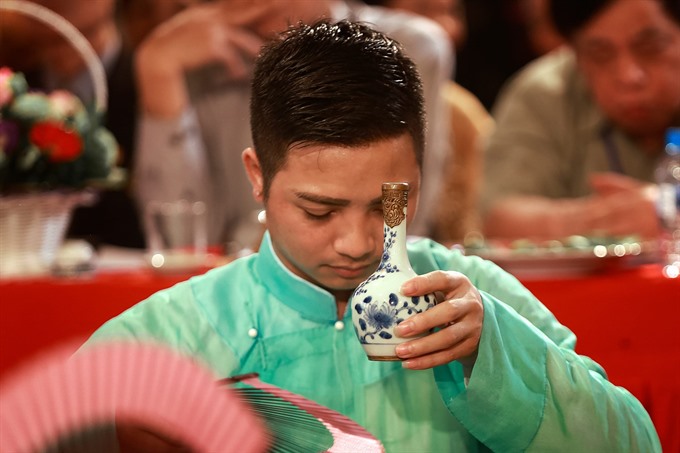 |
| Devoted: An assistant to a medium offers wine during the hầu đồng ritual. — VNS Photo Long Hưng |
Mother Goddess worship was once practised widely, but cultural activists condemned the practice, saying they were superstitious and often run by fraudsters.
“However, the practice was revived and legalised in the 1990s. Hầu đồng is now seen as a religious ritual and part of the traditional cultural treasure. It combines performing art, singing, dancing and music,” Đức said.
Đức said that many traditional hầu đồng rituals were lost when it was banned. That’s why nowadays many mediums performed the rituals incorrectly.
Traditionally there are six kinds of offerings used in the ritual, including incense, flowers, candles, tea and wine, fruit and food. When the ritual ends, these offerings are distributed to the followers and spectators as they believe they contain spiritual and material powert.
“However some people now offer cell phones and expensive jewelries during the hầu đồng ritual, which is not correct,” said Đức.
“At some hầu đồng ritual performances I attended, a medium used a national flag, not a festive flag, during the dance, or she invited spectators to dance with her, turning a solemn ritual into a farce."
Đức said the organisers want to eliminate all the recent additions to Mother Goddess worship and preserve its cultural values.
Trương Minh Tiến, vice director of the Hà Nội Department of Culture and Tourism, said the hầu đồng ritual practice was an integral part of the traditional culture of the nation.
“The Mother Goddess religion is tightly associated with the community,” he said.
“The community considers nature as ’the mother’ and worship her. Through the worship, people pray for happiness, prosperity and longevity. It clearly reflects patriotism, as all rituals and performances are dedicated to Mother Nature and heroes who have rendered great services to the nation.”
Tiến said it was necessary to continue researching the worship, raise people’s awareness of the cultural value of the Mother Goddesses belief and encourage veteran artisans to train younger generation to uphold the tradition.
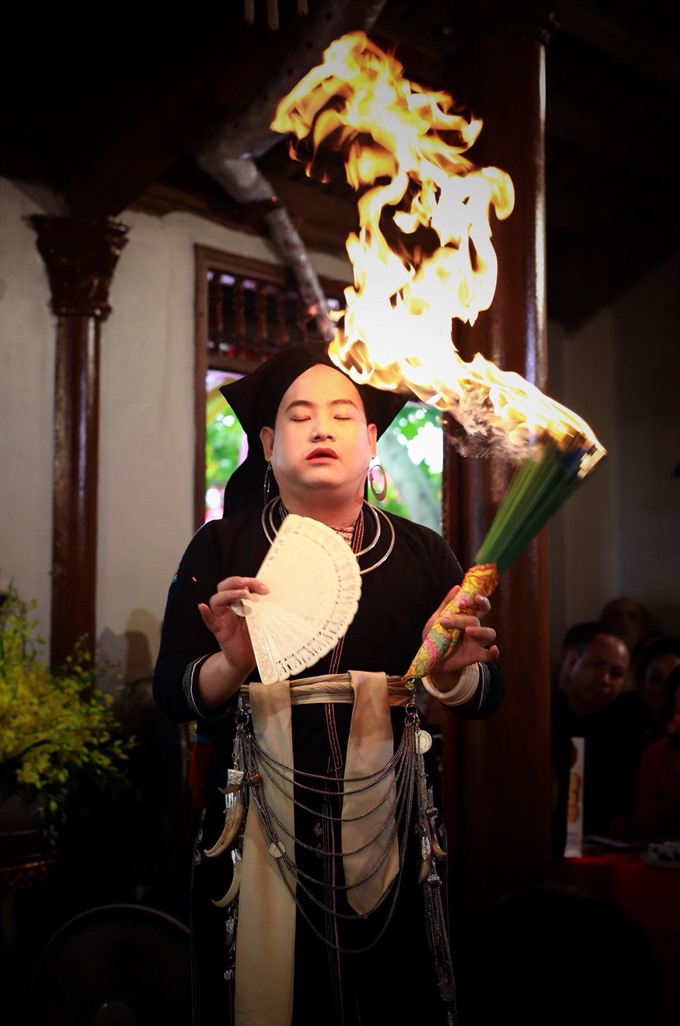 |
| Aflame: Medium Bùi Quang Lưu from the northern province of Bắc Giang performs hầu đồng ritual at the festival. — VNS Photo Long Hưng |
The belief originated in Việt Nam perhaps thousands of years ago. Last year it was recognised as an Intangible Cultural Heritage of Humanity by UNESCO.
Ngô Đức Thịnh, director of the Việt Nam Belief Culture Research and Preservation Centre in Hà Nội and vice chairman of the Asian Folklore Council, is a leading expert in the Mother Goddess religion.
He recommended that the authorities and cultural managers promote the true value of Mother Goddesses worship and weed out wrong behaviour.
“Performing hầu đồng on stage can be organised to introduce the ritual to the public and international audience, but we have to separate the performing art and the holy religious ritual,” said Thịnh.
“Hầu đồng ritual performed at temples and pagodas should maintain religious standards and traditional manners.” — VNS
| Book clarifies the belief A book on Four Palaces of Mother Goddesses Worship has been published by Trần Quang Dũng, vice chairman of the Thăng Long Cultural Heritage Association, veteran mediums and photographer Nguyễn Long Hưng. The book clearly defines Mother Goddess belief and the system of deities as well as rituals in the worship. Phạm Sanh Châu, secretary general of the Việt Nam National Commission for UNESCO presented a dossier of the worship at the Conference of the Inter-governmental Committee for the Safeguarding of Intangible Cultural Heritage held in Ethiopia last year. “The book approaches the heritage truthfully and reflects the beauty and spiritual value of the belief,” he said. — VNS |

